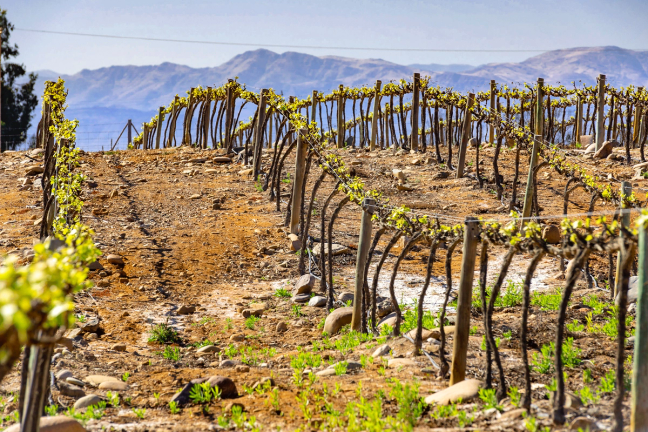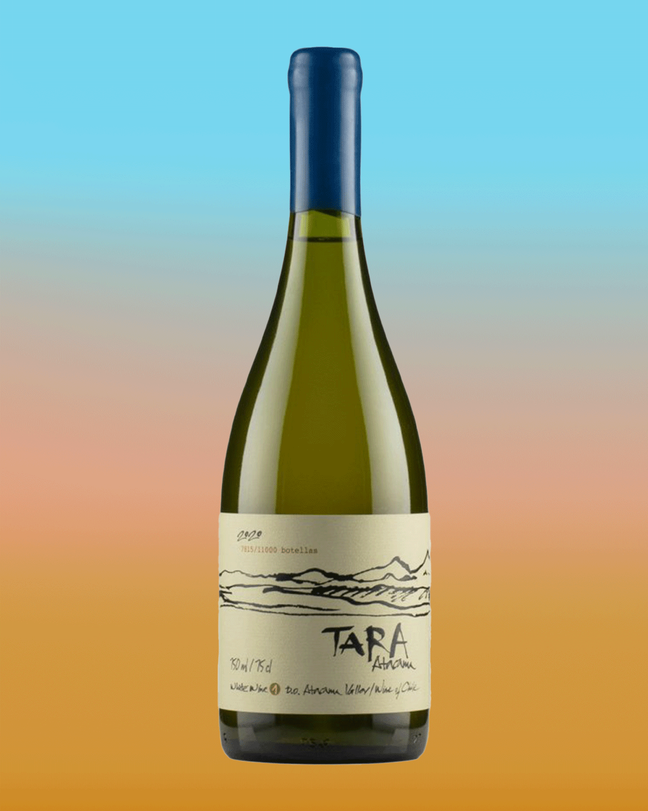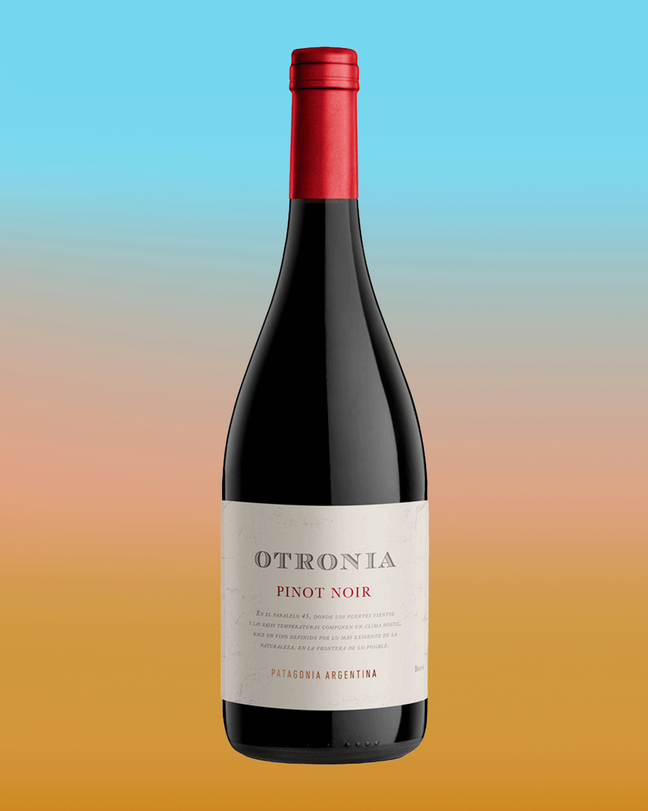How much do you know about extreme winemaking?
Amid inhospitable conditions, South American producers are creating ambitious bottles against the odds
‘Extreme winemaking’ has become something of a beacon for those looking for offbeat, characterful bottles. We’re not talking about cultivating vines halfway up a mountain while on a unicycle –but we’re not far from it, either. Since the turn of the century, a combination of rising temperatures and savvier viticultural practices has seen the quality of wine from unlikely-sounding regions rise markedly – from the volcanic soils of Etna to the lunar-like terrain of Lanzarote, where vines are buried in craters in the ground to protect them from the strength of the coastal winds.
It is South America, though, that plays host to arguably the most extreme examples, at both the north and south of the continent, amid conditions that are inhospitable, to say the least. I last visited the continent 15 years ago, and still remember the hair-raising journey along winding mountain roads to what was then the highest vineyard in the world, Colomé, in the northern Argentinian province of Salta. Today, that title is disputed by vineyards in Peru and Tibet, though Colomé remains the highest commercial winery of any significance, turning out bright yet powerful malbec that speaks of the fresh mountain air you find 2,300m above sea level.

The vineyards of Viña Ventisquero
When I returned to South America, earlier this year, I visited an even more unlikely winemaking haven – Chile’s Atacama Desert. Driving on the arid, dark soils that stretch as far as the eye can see, with little to no sign of life between you and the horizon, it is hard to believe that anyone would attempt to grow anything here – let alone grapes to produce fine wine. Yet, that is exactly what Viña Ventisquero is doing.
The venture looks even more ambitious when you notice a layer of salt sitting on the surface, a legacy of the Pacific Ocean’s presence millions of years ago (today, it is 15 miles away) and brought to the surface by the irrigation required here, given that the land receives, in a good year, barely 5mm of rainfall (the last proper rain, apparently, was 50 years ago). So predictable is the climate that vintage variation is virtually non-existent, with the harvest dates the same every year. Water is a precious resource and Ventisquero is pretty much the only winery intrepid – or foolhardy – enough to have negotiated access to it, before it planted vines here, in 2007.

The vineyards of Viña Ventisquero
Convinced that wine was viable by the success of the local olive trees, the Ventisquero team originally planned to plant Mediterranean varieties such as syrah and viognier. Then, they noticed the daily presence of the local fog, rolling in from the ocean, and the huge temperature drop in the evenings, which makes the average conditions relatively cool. As a result, they planted pinot noir, sauvignon blanc and chardonnay – along with syrah – and were determined to make wines in as ‘non-interventionist’ a way as possible.

The resultant chardonnay is tense, taut and lean, with a chalky, mineral salinity – winemaker Alejandro Galaz initially intended to add the racier viognier for some extra bite and acidity, but found that he didn’t need it. The wine is aged in a mixture of old, large oak barrels and concrete tanks, to lend structure (but not flavour), and is not clarified or filtered, so remains a little cloudy. ‘The idea is to produce a wine as close as possible in identity and character to the Atacama Desert – we want to keep that vibrancy and acidity and salinity,’ says Galaz.
Buoyed by its success against the odds, Ventisquero is now exploring the opposite end of the country, via an experimental project in the Chile Chico area of Patagonia that, by contrast, sees around 250mm of rain a year. Again, sauvignon blanc, pinot noir and chardonnay have been planted and the first wines were made in 2023 for release later this year.
Across the Andes, several wineries are already producing wine in the Argentinian part of Patagonia. Piero Incisa della Rocchetta, of the famous aristocratic family behind Tuscany’s Sassicaia, still remembers a Patagonian pinot noir that he tried, blind, 20 years ago. On learning its identity, he couldn’t believe such a sapid, vibrant, elegant wine could come from such a remote spot. ‘I thought Patagonia was a clothing brand and a land of glaciers,’ he recalls.
Unable to get the wine out of his mind, he scoured the region, trekking across its dirt roads without any mobile-phone signal and eventually finding – and buying – an abandoned, weedy, ungrafted 80-year-old vineyard. ‘I remember thinking to myself, “What am I doing?” The idea of growing pinot noir here, in a desert – you’d have to be a masochist.’
Incisa della Rochetta is not your typical Italian aristocrat – he washes his hair with vinegar and cleans his teeth with soda and coconut oil – and he was keen to apply his own ideas, free of the family orthodoxy. As a result, it was imperative to him to make a chemical-free wine. It turned out that the desert-like conditions provided what he describes as a ‘perfect luminosity and ripeness’ for the grapes, and a constant wind keeps everything dry, removing pests and bacteria without the need for pesticides and yielding cold nights that help develop the delicate aromatics of pinot noir.

Today, having teamed up with the renowned Burgundian winemaker Jean-Marc Roulot (of Domaine Roulot, one of the finest estates in Meursault, France), his Bodega Chacra turns out some of the most expressive pinot noir and chardonnay in Argentina, via biodynamic, low-intervention methods that allow the terroir to shine.

The vineyards of Bodega Otronia
Around 500 miles further south, in Chubut, Bodega Otronia lays claim to the title of the most southerly vineyard in the world (though Ventisquero is now rivalling it), at the 45˚ 33’ parallel. Here, Argentina’s richest man, energy tycoon Alejandro Bulgheroni, planted 50 hectares of vines in 2010 and, like Incisa della Rocchetta, was able to follow organic practices due to the inherently dry, disease-free conditions. The cold temperatures lend a high natural acidity to the grapes, along with a remarkable purity and aromatic intensity. The only challenge is the spring frost that can shut down vines, so they are sprayed with water in winter, thereby effectively freezing them in advance and protecting them.

The original plan was to make sparkling wine only – winemaker Juan Pablo Murgia didn’t think he would get enough warmth to ripen the grapes sufficiently for still wines. But that cool climate is compensated by long, sunny days in spring and summer that yield great sunlight, and wines with a fine balance of ripeness and acidity – not least in the vibrant pinot noir that stands as the flagship of the range.
Want more wine content? These are the 10 investment-worthy bottles that don’t cost a fortune…

Become a Gentleman’s Journal Member?
Like the Gentleman’s Journal? Why not join the Clubhouse, a special kind of private club where members receive offers and experiences from hand-picked, premium brands. You will also receive invites to exclusive events, the quarterly print magazine delivered directly to your door and your own membership card.


